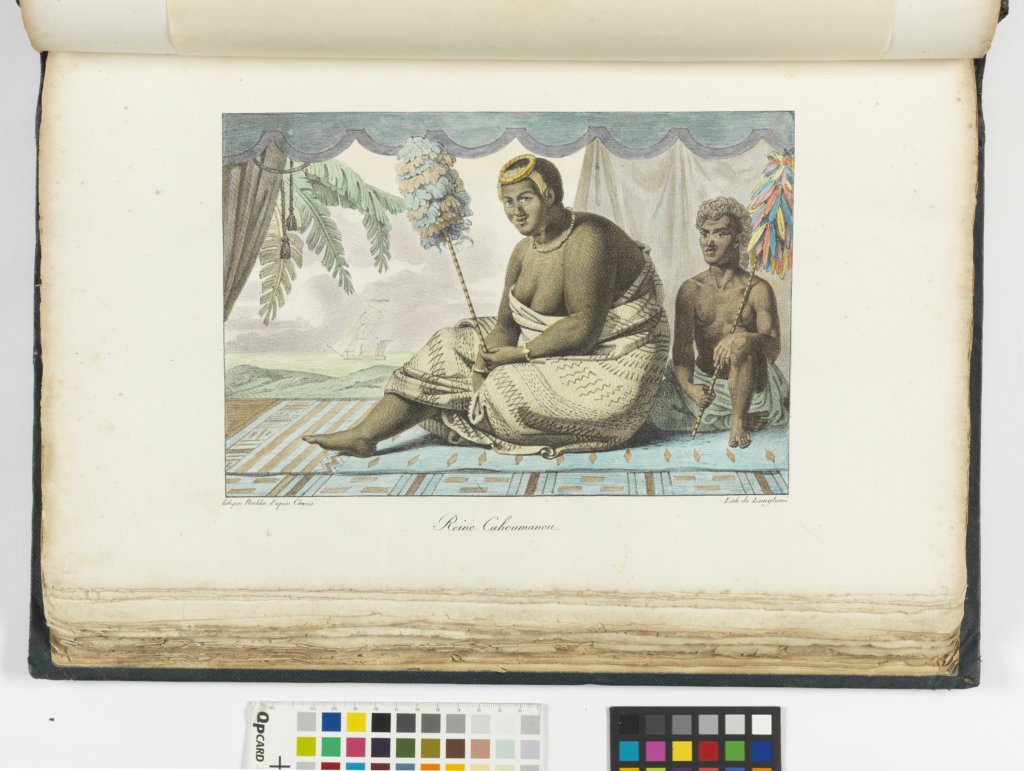Queen Kaʻahumanu
One of the most famous residents of Mānoa in the 19th century was King Kamehameha’s widow, Kaʻahumanu. After Kamehameha’s death, she became the kuhina nui (co-ruler) and along with Kamehameha II and III governed the islands until her death. Kaʻahumanu’s residence is well documented and visits to the queen by missionaries were recorded in their journals. Called Pukaʻōmaʻōmaʻo, it was a well-used retreat from the bustle and heat of Honolulu town. When she knew her death was near, Kaʻahumanu asked to be taken to her house in Mānoa and passed away there in 1832.

Reine Cahoumanou
Louis Choris, Russian (1795-1828)
The great Kaʻahumanu, beloved wife of Kamehameha, sits on elegantly patterned mats (probably made on Niʻihau Island) under the shade of a European tent, arranged almost in the manner of a European stage set. She is elegantly wrapped in great folds of kapa, wears a feather lei on her head, and has chosen to hold a small kahili, symbols of her chiefly status. A young male attendant sits at her back. Kaʻahumanu, while the favorite wife of great Kamehameha, had not yet achieved the political power that she attained at the time of his death in 1819, just three years after her appearance before Choris, but it was obvious to any visitor to the Hawaiʻi of this date that she was clearly a person to be reckoned with. This lithograph is from Choris’s Voyage pittoresque autour du monde (Paris, 1822).
Several years after the American missionaries had established themselves in Hawaiʻi in 1820, she became a Christian convert, and from that date she was tireless in sponsoring the missionaries’ cause. She died in 1832 in a thatched house with green shutters in Mānoa, not far from where Kūaliʻi (the Cooke home) stands today.